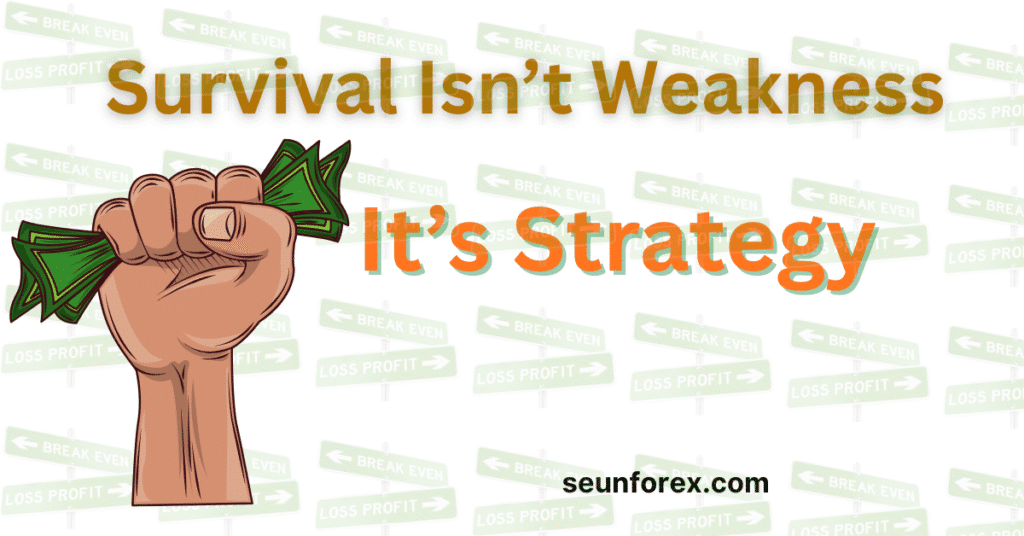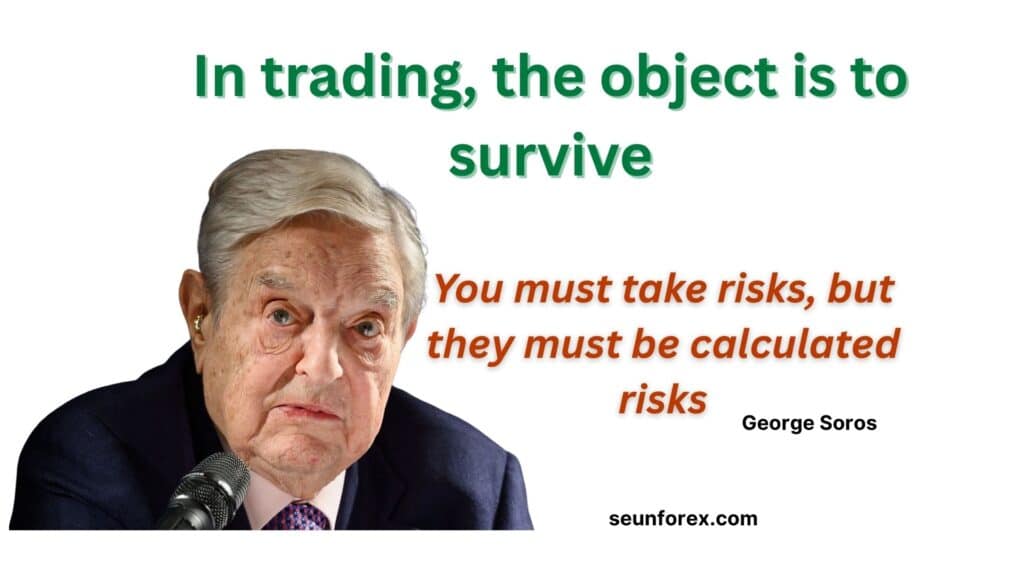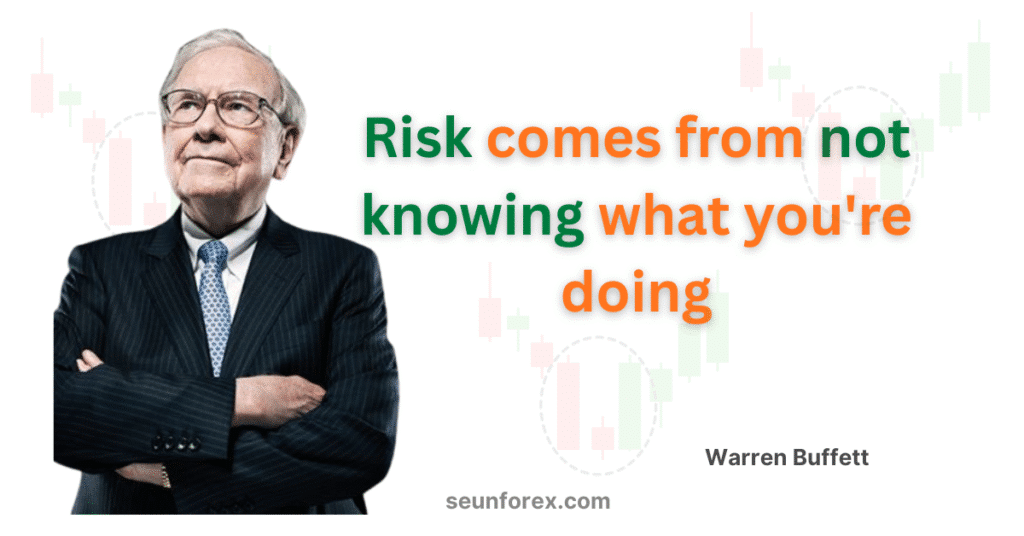
Trading Risk Management: The Capital Illusion
Every trader starts with a simple, seductive dream: If I had more money, I’d finally be successful.
This belief echoes across trading forums — a quiet conviction that more capital will solve drawdowns or emotional swings. Yet, behind every blown-up account lies the same paradox: trading risk management, not more money, is what separates hope from survival. Money doesn’t fix what poor risk control breaks.
More capital is only a lever.
If your process is disciplined, the lever multiplies your compounding.
If your process is fragile, the lever accelerates your collapse.
The markets are a mirror. They don’t reward hope; they reward risk management and discipline.
The Dangerous Comfort of Money
Capital often creates a capital illusion — the false sense of safety that comes with a larger account. Traders mistake that comfort for clarity, thinking scale validates strategy. But in truth, less risk, more hope is not a sustainable formula; only trading risk management turns volatility into opportunity.
As one veteran trader confessed after a major loss: “I didn’t realize I was managing money, not risk.”
The best traders — from Paul Tudor Jones to Ed Seykota — understand that survival is the strategy. In trading, survival isn’t boring. It’s brilliance.
“The most important rule of trading is to play great defense, not great offense.”
— Paul Tudor Jones
Hope is a Trap: The Psychology of Over-Risking
“More capital is hope.” This is the smart blasphemy. It means hope is what traders reach for when they’ve lost their process. Hope whispers, “If I just had more, I’d fix this.”
The human instinct to crave “more” (more wealth, more security) is what markets punish. In trading, more is often the enemy of enough.
The Invisible Enemy: Emotional Leverage
In trading risk management, the real threat isn’t just poor analysis—it’s emotional leverage. A trader risks small, grows steadily, then gets seduced by “more.” They double their position size. A predictable losing streak hits, and all prior gains disappear.
The strategy didn’t fail. The trader did—succumbing to emotional leverage.
Emotional leverage is the invisible weight that builds when you tie your self-worth to your P&L. It pushes you to revenge trade, to chase losses, to confuse risk with redemption. When you risk too much, you’re not trading the market; you’re trading your need to be right. High risk isn’t courage—it’s impatience disguised as confidence.
The Capital Trap
Markets don’t care about the size of your capital. They care about how efficiently that capital is deployed. This is the essence of trading risk management and risk control.
The best traders didn’t start rich. They started disciplined. They mastered the process of avoiding the capital illusion—the false comfort that more money equals more success. A small account with proper discipline will always outperform a large account managed by ego.
Because in trading, less risk means more hope, and survival is the only real edge.
Capital efficiency isn’t about size; it’s about survivability per unit of risk.
The Mathematics of Survival
Let’s prove that less risk equals more longevity with a simple comparison.
Imagine two traders with the exact same edge ( win rate,
payoff ratio):
| Trader | Risk Per Trade | 5-Loss Streak Drawdown | Recovery Needed |
| Trader A | Loss | Needs to recover | |
| Trader B | Loss | Needs only to recover |
Same edge. Vastly different survival rates.
Hope, in this context, is mathematical blindness—the refusal to accept that loss recovery grows exponentially as drawdowns deepen. This is why pros obsess over drawdown control, not return maximization.
As one fund manager explained:
“My first job is not to make money. My first job is to make sure I can come to work tomorrow.”
Your Framework: The Architecture of Edge
Risk management isn’t a slogan; it’s decision architecture. Here are the three non-negotiable rules for a robust, low-risk framework.
1. Position Sizing: The Golden Rule
The sole goal of position sizing is to survive the tails of probability. As Ed Seykota said: “The elements of good trading are: (1) cut losses, (2) cut losses, and (3) cut losses.”
- Fixed-Fractional Model: Risk no more than 1% of total capital per trade.
- Scale Gradually: Only increase size after a sustained period of rule-based consistency, not just a lucky streak.
2. The Power of Asymmetry
The market rewards asymmetry: the art of risking little to gain much. This is how you separate a professional process from gambling.
- Target a or better risk-to-reward ratio.
- Even with a lower win rate (like
), the math ensures positive returns over time. The math of freedom lives in this ratio.
3. Automated Defense (Stops & Volatility)
A stop-loss isn’t punishment; it’s permission to be human and make errors without extinction.
- Automate your stops. Don’t debate them mid-trade. Every stop you hit buys you future opportunity.
- Respect Volatility: Volatility is information. When market volatility rises, your position size must shrink. This principle ensures you don’t overexpose your capital during market shocks.
The Survival Mindset: Longevity is the Goal
When you view the markets through the lens of survival, everything changes. You stop asking, “How much can I make?” and start asking, “How long can I last?”
Freedom Through Control
Risk management might sound restrictive—stops, limits, rules. But these constraints create freedom.
- When you know your maximum loss, you can trade without fear.
- When you trust your process, you can detach from the outcome.
Less risk equals more freedom. It’s the freedom to be unshaken no matter what happens.
The By-Product of Discipline
The irony is that those who chase money rarely keep it, while those who chase process eventually attract it. Capital flows to discipline.
Wealth is a by-product of survival. The trader who protects small losses doesn’t need huge wins; they just need to keep the machine running long enough for compounding to do its silent work.
The Ultimate Metric
Ask yourself: If all your capital vanished tomorrow, could you rebuild it?
- If yes, you possess true wealth: skill, clarity, and resilience.
- If no, your returns were luck, not process.
The metric that outlasts returns is repeatability. Peace of mind is the dividend of low risk.
The Takeaway: Less Risk, More Hope

Real hope—durable, compounding hope—comes from knowing you can’t blow up.
You don’t need more money to trade better. You need: less risk, more time, more structure, and more patience.
The next time you catch yourself wishing for a bigger account, pause and ask: Have I truly mastered the account I already have?
Start small. Risk less. Build clarity.
The goal isn’t to have more capital. It’s to need less of it to feel hopeful.
The Dangerous Comfort of Capital
In trading risk management, capital can create the most deceptive illusion of all — the capital illusion of control. When a trader gains a larger allocation, comfort often masquerades as clarity. They believe scaling validates their process, but true discipline comes only from how deeply you understand and manage your downside.
Many traders fall into the same pattern—constantly tweaking or changing systems after each loss. But as explained in this insight on why changing your trading strategy kills profits, consistency and disciplined risk control matter far more than chasing new methods.
As one Wall Street trader admitted after a collapse: “I didn’t realize I was only managing money, not risk.”
That realization is the core of risk control — and the foundation of long-term success. The best traders, from Paul Tudor Jones to Ed Seykota, know that less risk and more hope is not a strategy; survival is.
In trading risk management, survival is the edge. The longer you endure, the more time your edge has to express itself — and the less illusion capital can create.
“The most important rule of trading is to play great defense, not great offense.”
— Paul Tudor Jones
Hope is Not a Hedge: The Psychology of “More”
“More capital is hope.” This line sounds optimistic, but it hides a brutal truth: hope is what traders reach for when they’ve lost their process. Hope whispers, “If I just had more, I’d fix this.”
The core human instinct to crave more—more wealth, more security—is what markets punish. In markets, more is often the enemy of enough.
A trader who risks 1% per trade grows steadily. The same trader, seduced by “more,” doubles position size. A predictable losing streak hits, and all the prior gains vanish in days. The strategy didn’t fail; the trader succumbed to emotional leverage.
The Emotional Drawdown
Every trader knows the financial drawdown, but few acknowledge the emotional drawdown. This is the depletion of confidence—the erosion of trust in one’s own process.
You can recover from a 20% portfolio loss. Recovering from self-doubt takes longer. Elite traders protect their emotional capital as fiercely as their financial capital. Their real edge lies in staying functional, rational, and consistent when others panic.
When you risk too much, you’re no longer trading the market; you’re trading your need to be right. High risk isn’t courage; it’s impatience in disguise.
The Capital Trap
Wall Street loves capital, but capital without process is a liability. Mark Minervini and Ed Seykota didn’t start rich; they built empires through tight risk and relentless process.
Markets don’t care about the size of your capital. They care about how efficiently that capital is deployed. A $10,000 account with proper risk discipline can outperform a $1,000,000 account managed by ego. Capital efficiency isn’t about size; it’s about survivability per unit of risk.
The Mathematics of Survival
Let’s put numbers behind the philosophy. The math proves that less risk equals more longevity.
Consider two traders with the exact same profitable edge (50% win rate, 2:1 payoff ratio):
- Trader A risks 5% of capital per trade.
- Trader B risks 1% of capital per trade.
Now, simulate a real market that includes a streak of five losses in a row:
| Trader | Drawdown After 5 Losses | Recovery Needed to Break Even |
| Trader A (5% Risk) | Down 22.6% | Needs +29% to recover |
| Trader B (1% Risk) | Down 4.9% | Needs only +5.1% to recover |
Same edge. Same market. Vastly different survivability.
Hope in this context is mathematical blindness—the refusal to accept that loss recovery grows exponentially as drawdowns deepen. This is why professionals obsess over drawdown control, not return maximization.
As one fund manager explained: “My first job is not to make money. My first job is to make sure I can come to work tomorrow.”
Start With Expectancy
Sustainable trading is built on expectancy, the north star of any strategy. It answers: How much do I expect to make or lose, on average, per trade?
Where and
are the probabilities of winning and losing, and
and
are the average dollar amounts. Expectancy is the antidote to hope: Hope guesses; expectancy measures.
1. Position Sizing: The Hidden Lever
Position sizing is the bridge between concept and consequence. Its sole goal is to survive the tails of probability.
“The elements of good trading are: (1) cut losses, (2) cut losses, and (3) cut losses.”
— Ed Seykota
The golden rule for survivability is a fixed-fractional model:
- Risk no more than 1% of total capital per trade.
- Scale size only after a statistically significant stretch of consistency, not a lucky streak.
2. The Power of Asymmetry
The market rewards asymmetry: the art of risking little to gain much. This separates pros from gamblers.
Consider risking $1 to make $3. Even with a modest win rate, your expectancy remains positive:
. That positive average gain, repeated hundreds of times with discipline, becomes exponential growth. The math of freedom lives in this ratio.
3. Stop-Losses: Your Permission to Be Wrong

A stop-loss is not punishment; it’s permission—permission to be human, to make errors without extinction.
The stop-loss is your seat belt. You don’t wear it because you expect to crash; you wear it because crashes happen faster than you can react. Automate your stops. Once the price hits your line, the conversation is over. Every stop you hit buys you future opportunity.
For a deeper understanding of how professional traders use protective orders within their overall framework of trading risk management, it’s worth studying established principles that emphasize structured exits and consistent discipline.
4. Volatility as a Compass
Volatility is not something to fear; it is information. It tells you how much the market demands you respect it.
A simple rule: when volatility rises (for example, when the Average True Range doubles), your position size should roughly halve. This principle saved countless traders during the 2020 COVID crash. Those who respected volatility survived.
That’s why risk is dynamic — and why professionals continuously monitor all three layers of exposure: market risk, position risk, and psychological risk.
The Survival Mindset: Trading for Longevity
When you view markets through the lens of survival, everything changes.
You stop asking, “How much can I make?” and start asking, “How long can I last?”
Freedom Through Risk Reduction
At first glance, risk management looks restrictive—stops, limits, rules. But paradoxically, these constraints create freedom.
- When you know your maximum loss, you can trade without fear.
- When you trust your process, you can detach from outcomes.
Freedom isn’t doing whatever you want. It’s being unshaken no matter what happens. Less risk equals more freedom.
Wealth as the By-Product
The irony of markets is that those who chase money rarely keep it, while those who chase process eventually attract it. Capital flows to discipline.
Wealth is a by-product of survival. The trader who learns to protect small losses doesn’t need to find huge wins; they just need to keep the machine running long enough for compounding to do its silent work.
The Metric That Outlasts Returns
Ask yourself: If all your capital vanished tomorrow, could you rebuild it?
If the answer is yes, you possess true wealth: skill, clarity, and resilience. If no, your returns were luck, not process. The metric that outlasts returns is repeatability. Peace of mind is the dividend of low risk.
The Takeaway: Less Risk, More Hope
Real hope—durable, compounding hope—comes from knowing you can’t blow up.
You don’t need more money to trade better. You need less risk, more time, more structure, and more patience.
The next time you catch yourself wishing for a bigger account, pause and ask: Have I truly mastered the account I already have?
Start small. Risk less. Build clarity. Because the goal isn’t to have more capital. It’s to need less of it to feel hopeful.